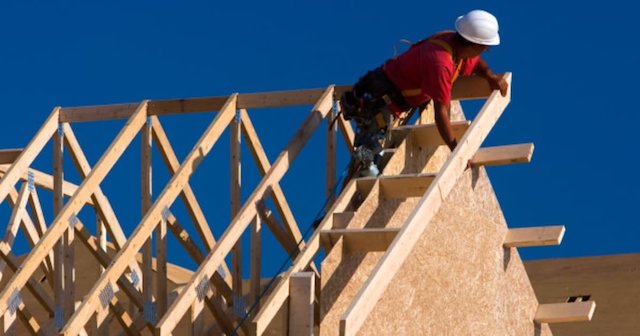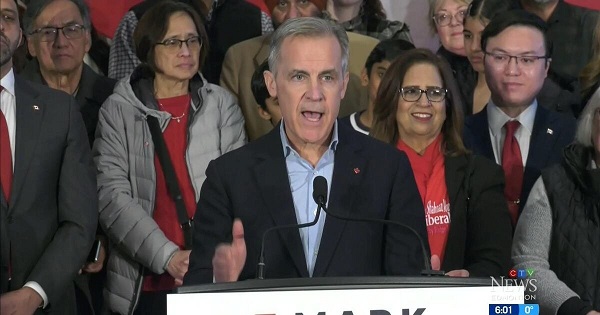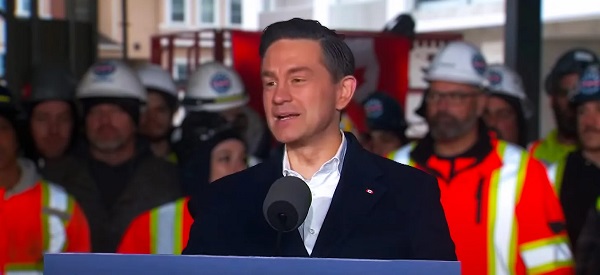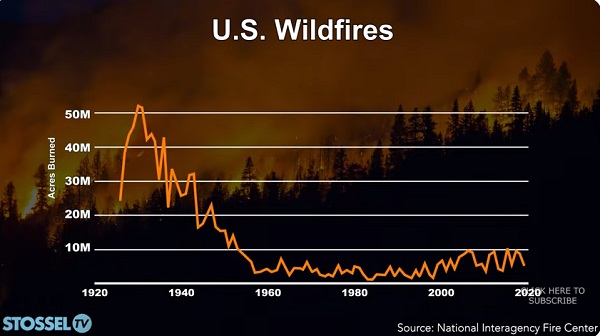Alberta
Four tips for preventing and handling Cyberbullying

This article is published with permission from SOS SAFETY MAGAZINE.
NOVEMBER 30, 2019
Growing up in the digital age has both pros and cons. On one hand, your child has access to an enormous amount of information that can guide their learning and connect them with many opportunities. On the other hand, there are people who use the internet with cruel intent to harm others with minimal or no consequences.
Cyberbullying is one of the negative effects of being able to access the internet at our fingertips. Bullying that was once done at school and could be monitored is now happening at all times online.
To help prevent cyberbullying and properly handle cases of online harassment, here are 4 suggestions for parents to consider.
- Create Awareness
While kids may be aware that cyberbullying is occurring, parents are often left in the dark. Panda Security found that 76% of parents claimed their child has never been cyberbullied.
While such a large percentage of parents don’t think their child is being cyberbullied, stats on cyberbullying tell an entirely different story. The National Crime Prevention Center reported that 43% of teens were victims of cyberbullying in the last year and Pew Research Center found that 59% of teens have been a target of cyberbullying.
There is a clear gap between how often parents think cyberbullying is occurring and how much it actually is. In order to close this gap, there needs to be more awareness and understanding of the topic.
- Report Cyberbullies
With a screen hiding their identity, cyberbullies feel safe to harass without consequences. To combat this, we must encourage kids to report cyberbullies. There are a few reasons these bullies aren’t reported.
To start, there is a fear of retaliation. Kids would rather keep quiet than be labelled a snitch or accidentally encourage the bully to take further action. Many cyberbullies are kids from school so they may also fear an in-school issue if they report the online issue.
In addition to this, kids feel ashamed. Being a victim of mean comments can be embarrassing and hard to bring up to adults. Bullies play on people’s insecurities on purpose so that people will be less likely to report them.
While these worries and concerns aren’t something you, as a parent, can control, you can control your reaction when your child tells you about a bully. A common fear many kids have is of how an adult will react or if they will be believed. Reassuring your child of your support will help them feel comfortable reporting these cyberbullies.
- Take the Right Action
If your child told you they were cyberbullied, how would you react? When surveyed about reacting to a cyberbully on social media, 73% of parents said they would block the bully’s profile, 56% would report them to the social platform and 50% would file a complaint with the school.
While 58% of parents would reach out to the bully’s parents, only 24% would reach out to the bully directly. This shows that there may not be a proper consequence given to the bully.
Taking the right action is important so that the bully knows what they did is wrong. If the cyberbully isn’t directly addressed and reported, they could continue harassing other kids. Be sure you’re aware of the laws and regulations for bullying in your state.
- Have Open Conversations
One of the most important things you can do is to have an open conversation with your child about cyberbullying. Panda Security found that 41% of parents have never had a conversation with their child about bullying. Of these parents who haven’t had a conversation with their kids about cyberbullying, 51% were dads and 65% were moms.
Parents would rather regulate their children’s online activity than have an open discussion with them. While regulations can help, there are many ways that kids can get around them. In addition, online monitoring doesn’t catch everything.
Keeping an open dialogue about bullying will help your kids feel more comfortable coming to you if there ever is an issue. Taking this preventative measure is healthier than simply being reactionary.
To open up this conversation, here are 8 suggestions for talking about cyberbullying.
- Talk about how you read about a rise in cyberbullying and stats that go along with it.
- Discuss examples of cyberbullying that you’ve witnessed or heard of.
- Ask if your kid has witnessed cyberbullying. Rather than directly asking if they have been a victim, let them open up about a friend or classmate.
- Assure them that if they were cyberbullying you would want to know so that you could support them.
- Let them know your policy on cyberbullying. What exactly would you do if they were cyberbullied and what would you do if they were caught being a bully.
- Emphasize how important it is to keep their device safe and secure.
- Be open with them about how you plan on monitoring their device to keep it safe.
- Ensure that your child knows that they have your support and you’re on their team.
Cyberbullying is an issue that many parents are facing or might face in the future. Being prepared and letting your child know you are there for them can make all the difference.
Learn more about SOS Safety Magazine, an amazing free resource in our community.
Alberta
Low oil prices could have big consequences for Alberta’s finances

From the Fraser Institute
By Tegan Hill
Amid the tariff war, the price of West Texas Intermediate oil—a common benchmark—recently dropped below US$60 per barrel. Given every $1 drop in oil prices is an estimated $750 million hit to provincial revenues, if oil prices remain low for long, there could be big implications for Alberta’s budget.
The Smith government already projects a $5.2 billion budget deficit in 2025/26 with continued deficits over the following two years. This year’s deficit is based on oil prices averaging US$68.00 per barrel. While the budget does include a $4 billion “contingency” for unforeseen events, given the economic and fiscal impact of Trump’s tariffs, it could quickly be eaten up.
Budget deficits come with costs for Albertans, who will already pay a projected $600 each in provincial government debt interest in 2025/26. That’s money that could have gone towards health care and education, or even tax relief.
Unfortunately, this is all part of the resource revenue rollercoaster that’s are all too familiar to Albertans.
Resource revenue (including oil and gas royalties) is inherently volatile. In the last 10 years alone, it has been as high as $25.2 billion in 2022/23 and as low as $2.8 billion in 2015/16. The provincial government typically enjoys budget surpluses—and increases government spending—when oil prices and resource revenue is relatively high, but is thrown into deficits when resource revenues inevitably fall.
Fortunately, the Smith government can mitigate this volatility.
The key is limiting the level of resource revenue included in the budget to a set stable amount. Any resource revenue above that stable amount is automatically saved in a rainy-day fund to be withdrawn to maintain that stable amount in the budget during years of relatively low resource revenue. The logic is simple: save during the good times so you can weather the storm during bad times.
Indeed, if the Smith government had created a rainy-day account in 2023, for example, it could have already built up a sizeable fund to help stabilize the budget when resource revenue declines. While the Smith government has deposited some money in the Heritage Fund in recent years, it has not created a dedicated rainy-day account or introduced a similar mechanism to help stabilize provincial finances.
Limiting the amount of resource revenue in the budget, particularly during times of relatively high resource revenue, also tempers demand for higher spending, which is only fiscally sustainable with permanently high resource revenues. In other words, if the government creates a rainy-day account, spending would become more closely align with stable ongoing levels of revenue.
And it’s not too late. To end the boom-bust cycle and finally help stabilize provincial finances, the Smith government should create a rainy-day account.
Alberta
Governments in Alberta should spur homebuilding amid population explosion

From the Fraser Institute
By Tegan Hill and Austin Thompson
In 2024, construction started on 47,827 housing units—the most since 48,336 units in 2007 when population growth was less than half of what it was in 2024.
Alberta has long been viewed as an oasis in Canada’s overheated housing market—a refuge for Canadians priced out of high-cost centres such as Vancouver and Toronto. But the oasis is starting to dry up. House prices and rents in the province have spiked by about one-third since the start of the pandemic. According to a recent Maru poll, more than 70 per cent of Calgarians and Edmontonians doubt they will ever be able to afford a home in their city. Which raises the question: how much longer can this go on?
Alberta’s housing affordability problem reflects a simple reality—not enough homes have been built to accommodate the province’s growing population. The result? More Albertans competing for the same homes and rental units, pushing prices higher.
Population growth has always been volatile in Alberta, but the recent surge, fuelled by record levels of immigration, is unprecedented. Alberta has set new population growth records every year since 2022, culminating in the largest-ever increase of 186,704 new residents in 2024—nearly 70 per cent more than the largest pre-pandemic increase in 2013.
Homebuilding has increased, but not enough to keep pace with the rise in population. In 2024, construction started on 47,827 housing units—the most since 48,336 units in 2007 when population growth was less than half of what it was in 2024.
Moreover, from 1972 to 2019, Alberta added 2.1 new residents (on average) for every housing unit started compared to 3.9 new residents for every housing unit started in 2024. Put differently, today nearly twice as many new residents are potentially competing for each new home compared to historical norms.
While Alberta attracts more Canadians from other provinces than any other province, federal immigration and residency policies drive Alberta’s population growth. So while the provincial government has little control over its population growth, provincial and municipal governments can affect the pace of homebuilding.
For example, recent provincial amendments to the city charters in Calgary and Edmonton have helped standardize building codes, which should minimize cost and complexity for builders who operate across different jurisdictions. Municipal zoning reforms in Calgary, Edmonton and Red Deer have made it easier to build higher-density housing, and Lethbridge and Medicine Hat may soon follow suit. These changes should make it easier and faster to build homes, helping Alberta maintain some of the least restrictive building rules and quickest approval timelines in Canada.
There is, however, room for improvement. Policymakers at both the provincial and municipal level should streamline rules for building, reduce regulatory uncertainty and development costs, and shorten timelines for permit approvals. Calgary, for instance, imposes fees on developers to fund a wide array of public infrastructure—including roads, sewers, libraries, even buses—while Edmonton currently only imposes fees to fund the construction of new firehalls.
It’s difficult to say how long Alberta’s housing affordability woes will endure, but the situation is unlikely to improve unless homebuilding increases, spurred by government policies that facilitate more development.
-

 2025 Federal Election1 day ago
2025 Federal Election1 day agoThe Federal Brief That Should Sink Carney
-

 2025 Federal Election1 day ago
2025 Federal Election1 day agoHow Canada’s Mainstream Media Lost the Public Trust
-

 2025 Federal Election2 days ago
2025 Federal Election2 days agoOttawa Confirms China interfering with 2025 federal election: Beijing Seeks to Block Joe Tay’s Election
-

 2025 Federal Election1 day ago
2025 Federal Election1 day agoReal Homes vs. Modular Shoeboxes: The Housing Battle Between Poilievre and Carney
-

 Media13 hours ago
Media13 hours agoCBC retracts false claims about residential schools after accusing Rebel News of ‘misinformation’
-

 John Stossel1 day ago
John Stossel1 day agoClimate Change Myths Part 2: Wildfires, Drought, Rising Sea Level, and Coral Reefs
-

 COVID-191 day ago
COVID-191 day agoNearly Half of “COVID-19 Deaths” Were Not Due to COVID-19 – Scientific Reports Journal
-

 Bjorn Lomborg12 hours ago
Bjorn Lomborg12 hours agoNet zero’s cost-benefit ratio is CRAZY high



